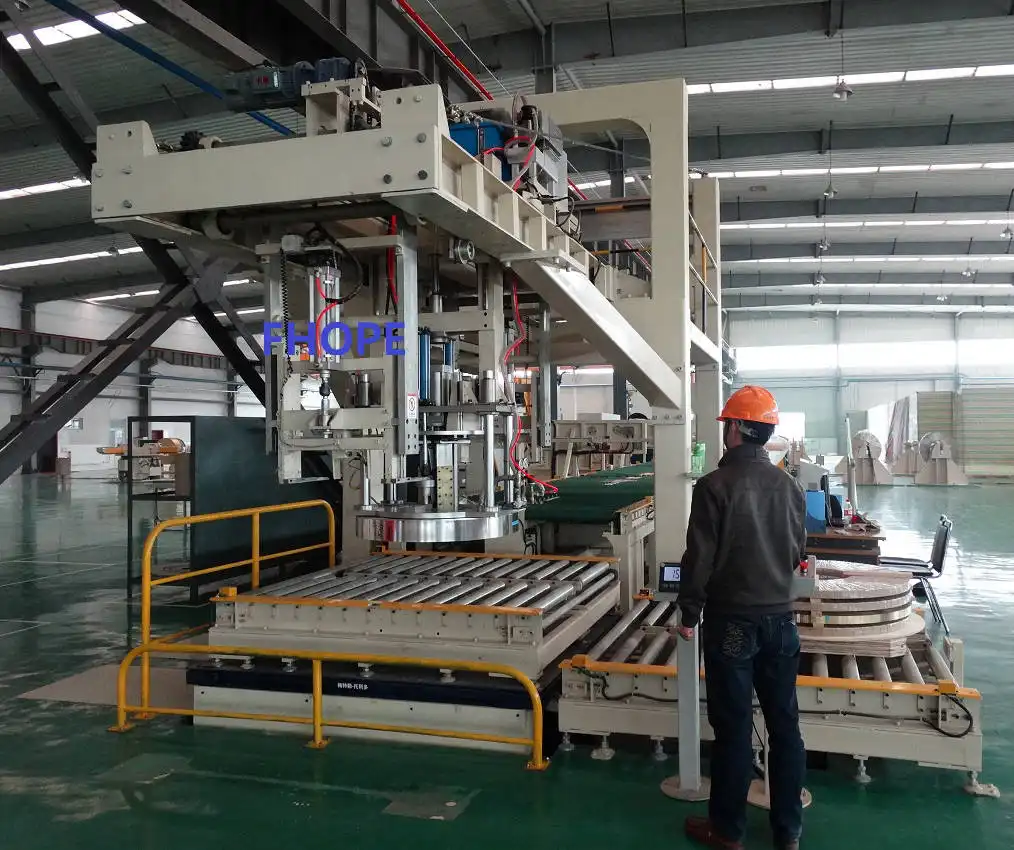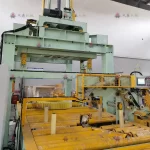The Importance of On-Site Training for Steel Coil Packing Line Operators

In today’s industrial landscape, where automation and efficiency play pivotal roles in the success of manufacturing processes, one factor often overlooked is on-site training for machine operators. When it comes to the steel coil packing line, a highly specialized piece of equipment, ensuring that operators are well-trained can make a world of difference. Proper training not only enhances productivity but also reduces operational risks, cuts down on costly mistakes, and prolongs the lifespan of machinery.
In this article, we will explore why on-site training is critical for steel coil packing line operators, how it affects safety, efficiency, and maintenance, and what steps companies can take to ensure their workforce is fully equipped to handle the demands of modern packaging systems.
1. Boosting Operational Efficiency
The core benefit of on-site training is that it boosts operational efficiency. A well-trained operator is more likely to maximize the potential of the equipment they’re working with, leading to higher throughput and fewer errors. Understanding the nuances of a steel coil packing line—such as how to adjust settings for different coil sizes or materials—can drastically improve how smoothly the line runs.
Untrained or poorly trained operators may struggle to optimize the machine’s performance, causing slower production times and an increased number of mistakes. These mistakes may range from improperly wrapped coils to machine malfunctions, both of which can lead to expensive downtime. On-site training, specifically tailored to the actual environment and equipment in use, allows workers to learn in the context of their job, improving their ability to troubleshoot and adapt to real-time conditions.
The Impact of Tailored Training Programs
A one-size-fits-all training approach simply doesn’t work in the realm of steel coil packaging. Every company, facility, and machine has its own unique workflow, which is why on-site training is crucial. Customizing training programs ensures that operators understand the specifics of the particular equipment they’ll be working with. When training takes place at the actual site, it also allows trainers to assess environmental factors that may impact machine use, such as space constraints or power variations.
Customized training equips workers to deal with the everyday challenges specific to their operational environment. This reduces the learning curve and eliminates the possibility of common mistakes that may occur due to unfamiliarity with the equipment.
2. Enhancing Workplace Safety
Workplace safety is paramount, especially when dealing with heavy machinery like steel coil packing lines. On-site training ensures that operators are aware of all the safety protocols specific to the machine they are working on. Understanding the safety risks involved in handling steel coils, such as their heavy weight and potential instability, is critical for preventing accidents.
Many accidents happen due to improper use of equipment, but with comprehensive on-site training, these risks can be mitigated. Workers learn how to handle coils securely, manage the loading and unloading process safely, and respond quickly in the event of a machine malfunction or emergency. Moreover, training on-site allows employees to become familiar with safety features specific to their machinery, such as emergency stop buttons and protective guards.
Reducing the Risk of Injury and Equipment Damage
Steel coils are heavy and can be dangerous if mishandled. On-site training helps operators learn the safest ways to handle these materials and how to avoid injury. Proper training also reduces the risk of equipment damage. Operators who are unfamiliar with the machine’s capabilities or limitations are more likely to cause unnecessary wear and tear, potentially leading to costly repairs or replacements.
By reinforcing best practices and ensuring that employees fully understand their equipment’s safety features, companies can avoid downtime due to accidents and maintain a safer working environment for everyone involved.
3. Minimizing Downtime with Quick Troubleshooting
In any production line, downtime is the enemy. Unexpected breakdowns and operational issues can cause significant delays and financial losses. Well-trained operators, however, are more adept at troubleshooting and resolving minor issues before they escalate into larger problems.
With on-site training, operators learn how to diagnose common problems, such as misaligned coils, strapping issues, or software errors, and either fix them on the spot or know when to call for technical assistance. This reduces the amount of time that machines are out of commission and helps the production line stay on schedule.
Real-Time Problem Solving in Action
By training operators directly on the machines they will be using, you ensure that they can apply their knowledge in real time. Instead of theoretical classroom settings, on-site training provides practical, hands-on experience that prepares workers for actual scenarios they are likely to encounter. They learn to handle the intricacies of the specific machinery in their factory, from managing different coil sizes to addressing mechanical wear and tear.
This real-time problem-solving capability is invaluable in a fast-paced production environment where even a few minutes of downtime can have ripple effects across the entire operation.

Get Your Best Solution !
4. Extending Equipment Lifespan
Every piece of machinery has a finite lifespan, but how long it lasts can vary greatly depending on how it is used. Improper handling or lack of maintenance can significantly shorten the lifespan of a steel coil packing line. On-site training ensures that operators understand the correct procedures for operating and maintaining the equipment.
When workers are properly trained, they’re more likely to follow preventive maintenance schedules, clean equipment regularly, and identify potential issues before they become major problems. This proactive approach not only keeps machines running smoothly but also extends their operational lifespan, saving companies money in the long run.
Understanding Maintenance Protocols
During on-site training, operators are typically walked through the maintenance protocols specific to their machinery. This can include everything from how often to lubricate moving parts to what signs to look for that might indicate a mechanical issue. Having this knowledge ensures that the steel coil packing line is always in optimal condition, preventing breakdowns and maximizing uptime.
Regular, informed maintenance reduces the risk of sudden failures and helps in planning scheduled downtime, which can be incorporated into the production schedule with minimal disruption.
5. Improving Product Quality and Consistency
Consistent product quality is the hallmark of any successful production line, and the steel coil packing process is no exception. Poorly trained operators are more likely to make mistakes that lead to improperly wrapped coils, which can affect the stability and protection of the product during shipping.
Proper on-site training ensures that operators know how to properly adjust machine settings to match the specific coil sizes and materials they are working with. This leads to greater uniformity in packaging, reducing the number of damaged products and improving overall customer satisfaction.
Adapting to Different Packaging Requirements
Steel coils come in different sizes and materials, and each type may require slight adjustments to the packing process. On-site training enables operators to adapt quickly to these variations, ensuring that each coil is wrapped securely and consistently. Whether it’s adjusting tension levels or aligning the coil for strapping, these fine-tuned adjustments contribute to higher-quality packaging that better protects the coils during transport.
6. Reducing Long-Term Costs
While on-site training may seem like a costly investment upfront, it often pays for itself many times over. The savings come in the form of reduced equipment downtime, fewer accidents, improved product quality, and extended machinery lifespan. In the long term, a well-trained workforce reduces the frequency of breakdowns and mistakes, which translates to fewer costly repairs and less product loss.
By ensuring that operators are fully trained on their specific equipment, companies can save on maintenance costs, improve operational efficiency, and ensure that the production line runs smoothly day after day.
Maximizing ROI Through Skilled Labor
Ultimately, the more skilled your workforce, the higher your return on investment (ROI). A knowledgeable operator can handle a greater workload with fewer errors, meaning the production line can operate at full capacity. Additionally, the ability to troubleshoot minor issues reduces the need for frequent technical assistance, cutting down on support costs.
Investing in on-site training isn’t just about reducing risks; it’s about maximizing the value of your equipment and workforce.
Conclusion
The value of on-site training for steel coil packing line operators cannot be overstated. From improving operational efficiency and enhancing workplace safety to extending the lifespan of machinery and reducing long-term costs, the benefits are clear. Companies that invest in thorough, customized, and hands-on training programs for their operators will reap the rewards of a more skilled, productive, and confident workforce.
Ensuring that operators are fully equipped to handle the complexities of their machinery is not just a best practice; it’s an essential step toward achieving long-term success in the steel coil packaging industry. By making on-site training a priority, companies can optimize their processes, improve product quality, and maintain a safer and more efficient work environment.
In a world where automation and precision are key, never underestimate the power of well-trained operators to make a significant difference in the performance of your steel coil packing line.

Get Your Best Solution !








